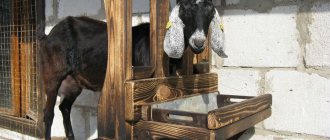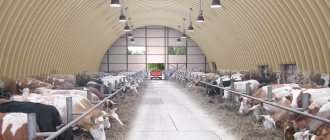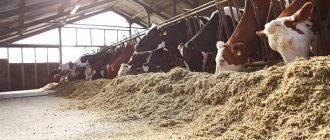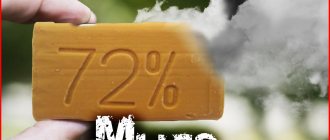If there are 3-4 cows on a farm, it is difficult to milk them manually. The process takes a long time. There is a danger that the lactation regime will be disrupted. The cow will produce less milk every day. Devices will help replace manual labor and speed up the collection of milk from animals. Some cattle owners prefer to make a milking machine for cows with their own hands. Experts warn that it is better to purchase the basic elements for installation in stores rather than assemble them from scrap materials.
The operating principle of the milking machine
Before you understand the principle of operation and begin manufacturing, you need to understand what main components the milking machine consists of:
- milking cups – 4 pieces;
- hoses for pumping milk and pumping air;
- metal milk collector;
- pump with electric motor;
- collector.
Depending on the model, the device is equipped with a pulsator or a piston pump works instead. The second type of unit consists of a set of valves that are equipped with a milk collector (can) and a pump. Their alternate operation is associated with the direction of movement of the piston.
Milking cups have a complex structure. The basis is a metal or plastic case. There are rubber inserts inside. The elastic element tightly covers the cow's udder teats. There is a sealed chamber between the body and the inserts.
Two hoses are connected to each glass. A thick tube for suctioning milk is connected to a rubber insert. A thin hose is connected to the body of the glass. Air is forced through it into the sealed chamber.
The operating principle of a push-pull installation is as follows:
- The glasses are placed on the cow's udder teats and the pump is turned on;
- Initially, low pressure is maintained inside the rubber insert of the cup (the nipple chamber). When the pump activates the pulsator or valve (depending on the design), the vacuum begins to pulsate. With the simultaneous formation of low pressure in the sealed interwall and sub-mammary chamber, milk flows out of the cow's udder teat.
- Thick hoses carry the milk through a manifold into the can.
The flow of milk stops when the pressure inside the inter-wall sealed chamber equalizes to atmospheric pressure.
Almost all units are vacuum and operate on the same principle. Specifications and details differ for different models.
There is such a thing as discontinuous milking. The principle of a push-pull milking machine is based on the constant suction of milk from the cow's udder. The unit has only two operating modes: milk suction and nipple compression. Three-stroke devices work on a similar principle, only there is a third rest mode. For a cow, this option is physiologically more convenient, as it resembles hand milking.
Most modern milking machines are push-pull. They are lighter and easier to transport. Three-stroke models are powerful, usually permanently installed.
The devices differ in the way they milk a cow:
- Suction models suck out milk using a vacuum. The advantage of the technology is the careful treatment of the cow's teats and udder itself. The process closely resembles manual milking.
- Squeeze models operate using vacuum and additional excess pressure.
Suction devices are produced on an industrial scale, and squeezing units are made to order.
Milking units differ according to the method of transporting milk. At home and on small farms, mobile devices with a can are used. On large farms, milk is collected in a large stationary container and transported through long pipelines.
Compression stroke
After the valve has stopped the spread of vacuum, oxygen begins to flow into the interwall chamber. This leads to normalization of pressure. Normal atmospheric pressure presses on the outer wall of the cup. The nipple rubber begins to compress the nipple, which leads to a massage effect. When the pressure in the area of the pulsator membrane is normalized, it begins to sag. This causes the valve to rise. In the raised position, the valve restricts the flow of oxygen, which gives rise to a new stroke of sucking.
Pros and cons of a home milking machine versus a purchased one
Having decided to make a milking machine at home, you need to compare the pros and cons of a homemade and factory-made unit. Based on the results, make a final decision.
- lower cost if you assemble the units yourself at home;
- the ability to adjust the milking machine layout with your own hands to suit your needs;
- assembly of units taking into account personal requirements;
- independent future maintenance of the milking unit and its repair at home.
- there is no guarantee of reliable operation of the device, gentle milking of the cow’s udder;
- To properly install components at home, you need knowledge and experience;
- the savings are small, since all components will have to be purchased;
- installation of complex parts will require technical decisions.
Advantages of a factory-made milking unit:
- guaranteeing reliable operation of the device, reducing the risk of injury to the cow’s udder;
- manufacturer's warranty service;
- the purchased installation is immediately ready for operation without testing procedures;
- aesthetic appearance, compactness of the device.
Disadvantages of a factory-made machine for milking cows:
- the high price is not always affordable for a private cow owner;
- some design components may not meet consumer requirements;
- Sometimes you will have to invite a service center representative for service;
- Post-warranty repairs are more expensive for the owner.
After weighing all the pros and cons, it will be easier to decide what is better, make a manual milking machine or buy a ready-made unit.
Review of popular models
Milking machines are presented on the market in a wide variety, but among them the following models are especially popular:
AID-1
The device is based on a push-pull operating principle and without a pulsator. Convenient for small farms, since it can serve no more than 10 cows in 1 hour.
It has an oil pump that does not overheat and does not make much noise during operation. The pressure is 47 kPa, that is, close to the optimal 50 kPa.
AID DA-3M "Volga"
A three-stroke universal machine that has two-chamber stainless steel teat cups and is also equipped with a pulsator, a vacuum valve and a main hose.
Doyushka 1R
Compact in size, automated and reliable. Suitable for small farms - it can milk about 10 cows in 1 hour. The farmer does not need to adjust the number of cycles. The pulsation depends on the operation of the piston pump, which creates 64-70 strokes per minute.
Maiga
Two-stroke and easy to maintain unit. A bucket with a handle is attached to the device, so it is very convenient to drain the milk. It is characterized by high mobility.
My Milka
Dry rotor type units. Equipped with a powerful engine capable of 1450 revolutions. The set includes 4 glasses for pair milking. The models are designed to serve 8 cows in 1 hour.
Berezka-1, Berezka-2
Mobile dry type installations. They can milk up to 24 cows in 30 minutes. Equipped with a powerful motor that makes loud noises. Power – 1500 rpm.
Compact (1 STD, 2 STD) from Milkline
Popular dry type devices from a leading European manufacturer. One mobile unit can process up to 14 cows in 1 hour. The milk comes into a transparent bucket with a measuring ruler.
DeLaval
Units with a dry-type electric motor from a Swedish manufacturer. They do not make noise during operation. They are considered one of the best, but have a high cost.
Buryonka
The lightest unit in weight, which differs from other models in the separate location of the milking bucket. Farmers recommend choosing Burenka Tandem equipment for simultaneous double milking.
Units are also produced in “Standard”, “Euro”, “Stainless Steel”, “Maxi” modifications. Up to 20 heads can be served in 1 hour. Power - from 1500 to 3000 rpm.
How to make a milking machine with your own hands
To assemble a homemade product at home, you first need to buy all the components. You will need:
- vacuum type pump;
- hanging mechanism;
- pulsator;
- can;
- a set of hoses for pumping milk and pumping air.
After purchasing all the parts, they begin to develop the project. You can take a factory milking machine as a basis. The diagram is completely copied or their own adjustments are made. First of all, the design of the frame is determined, and then all the components are placed on it.
The functionality of the cow milking machine depends on the choice of components. The unit must comply with the technical specifications. Quality will affect longevity of use. It is advisable to pay attention to cost. Some spare parts from domestic manufacturers are not inferior in characteristics to imported analogues, but are cheaper.
The vacuum pump is the main working unit of a homemade device. The quality of milk suction from the cow's udder teat depends on its work. The choice of pumps is huge. First of all, preference is given to trusted manufacturers. According to the pricing policy, they choose the golden mean. A high-quality pump cannot be cheap. The unit is too expensive and difficult to provide post-warranty service.
The nuances of the milking procedure - regularity, frequency and timeliness
The regularity and frequency of milking of cattle depend on factors such as the breed of cattle, health status, structure of the mammary glands, and the frequency of milking. On average, a cow produces about 70 liters of milk per day.
Experts are of the opinion that cows should be milked at least two to three times a day. It has been experimentally proven that if you milk her less than twice, this will lead to a decrease in milk yield and udder diseases. The average milk flow rate should be at least 1 liter per 1 minute.
After a heifer reproduces, her milk volume increases. During this period of time, the number of procedures increases to five times a day.
It is advisable to milk at regular intervals, at the same time. If there is little production, then switch to milking three times a day.
Before milking the cattle, you need to clean the stall - remove the manure, lay out fresh bedding, and ventilate the room.
- If the cow is young, then tie it up for safety reasons. It is advisable to also attach the tail to the hind limb so that she does not fan herself with it and accidentally touch the milkmaid’s face.
- The animal loves affection, so pet it, call it by name, make contact.
- Wash your hands with soap and change your clothes to clean ones. It is better to have a special robe or apron for these purposes. A headscarf or hat is required.
- Wash the udder with non-hot water and wipe with a dry and clean cloth.
- Get a massage. Do not rush to pull the nipples on an unprepared milk organ.
- The first milk streams should be directed into a separate vessel. It is advisable to do this through gauze or dark cloth in order to identify the presence or absence of diseases by the discharge of blood, mucus, characteristic of flake mastitis. And thus, the dirt accumulated during the walk is removed from the nipples.
Design is the most important building process
If you decide to make a milking machine with your own hands, then you need to understand that it will not be possible to assemble such a complex device from scrap materials alone. You will need to purchase ready-made mechanical components, hoses, and containers. From these, a homemade milking machine will be assembled, which is not inferior in its performance characteristics to industrial equipment.
All milking equipment has a general structural principle and necessarily includes:
- power supply for connecting the electric motor and the power plant itself;
- hanging equipment with a pulsator responsible for the periodic compression and relaxation of the cow's teats;
- a collector responsible for removing milk from the udder;
- hanging unit with milking cups;
- a flexible thread that reliably connects the suspended equipment to the air motor;
- hoses responsible for creating a vacuum and transporting milk;
- containers for collecting the finished product;
- tachometer for monitoring the operation of milking equipment.
The milking machine design requires the use of a power unit, which can be manual, electric or mechanical.
When choosing design elements for a homemade machine for milking cows, you should focus on the recommendations of experts, your financial capabilities, the size of the barn and the number of dairy cows kept.
Sucking stroke
During the stroke, the membrane in the pulsator bends so that it blocks the flow of oxygen into the pulsator. The resulting vacuum passes into a special chamber located between the walls of the milking cup. In the nipple area and in the chamber, the vacuum becomes equal, which leads to milk suction. After a split second, the vacuum begins to spread under the pulsator membrane, and this leads to the lowering of a special valve. It blocks further expansion of the vacuum.
Choosing the most cow-friendly equipment
When thinking about how to make a milking machine yourself, do not forget that this equipment should not cause even minimal harm to the health of the cow. Improperly manufactured devices can provoke the occurrence of mastitis and other physiological abnormalities.
An individual cow milking machine imitates the movements of the lips of a calf as it sucks milk, and the release of the udder should be maximum.
The milking cups are made of a hard material, covered on the inside with soft rubber, which fits tightly to the udder and provides the creation of a vacuum necessary for the process of rapid milk extraction.
When creating a milking machine for cows at home, you should pay special attention to the quality of such cups, which will be attached to the teats and should not lead to their cracking.
Experts recommend using transparent rubber or plastic for milking cups and milk hoses, which allows you to control the milking process and stop it in a timely manner by moving the suspension unit to the udder of another animal.
Selecting a power plant
When keeping one or more cows, in most cases, farmers have to milk the animals by hand. This is a physically difficult process, leads to fatigue of the milkmaid and is not able to guarantee absolute compliance with sanitary and hygienic standards.
Correct assembly of the milking machine reduces labor costs, simplifies the milking process, and increases the productivity of cows. A mechanical propulsion system allows the use of the physical strength of 1 person, but it is a bad solution because it does not relieve the burden on the livestock breeder.
Electrically driven power devices are often made from vacuum cleaner motors. They are practical, easy to operate, but require electricity, which may occasionally cause problems in rural areas.
Diesel engines are considered the most practical and efficient mechanisms that regulate the start and operation of such a system. They are reliable and, if the operating rules are followed, can work for many years.
Their very significant drawback is the use of machine oil and diesel fuel, which can leak, polluting the farm, which inevitably affects the quality of the milk produced. In addition, such a motor makes loud noise, affecting the well-being of animals and putting them in a stressful state. Therefore, it is best to mount the power unit in an isolated room, ensuring its connection with the suspension unit using long hoses. You can also use homemade or industrial sound mufflers.
It is better to purchase an industrial pulsator and collector in a store
Extremely important elements of the milking machine are the pulsator and the collector, which are responsible for extracting milk from the udder and transporting it to a special container. If you are deciding how to assemble a milking machine and plan to make these two most important elements of the system yourself, you can make a grave mistake that can lead to negative consequences.
Improper operation of a homemade pulsator and collector can injure cattle, cause stress, and even the most productive cow will reduce her milk yield.
It is best to purchase ready-made equipment of domestic or foreign production that is most suitable for you in terms of price and power, connecting it to a common milking system.
If a cow butts and kicks - ways to protect yourself
Often, during the collection of milk, a cow can cause serious injuries to the milkmaid. In such cases, many send the animal to slaughter. But there are more gentle methods that can calm the nurse:
- Install dim, dim lighting in the room in which you will milk. Bright light can irritate livestock.
- Place a bag or blanket over the cow's head. This will calm her down.
- Give the female food. While eating, she will focus on chewing. Sometimes she is fed treats such as sugar, carrots, etc.
- Tie the hind legs with a figure-eight rope and secure the other end to a fence, fence or post. She is unlikely to like it, but over time she will calm down and get used to it.
- Tie the tail to the back leg so that during the process or swatting away flies and mosquitoes, she does not hit the milkmaid in the face with it.
- Carry out the procedure in a special milking machine. It is equipped with crossbars to which the cattle's limbs can be tied.
- If none of the methods helps, try machine milking instead of manual milking. But the transition must be smooth so that the cow gets used to the noise emanating from the milking unit.
Important
Under no circumstances should you shout at the cow or hit it. This will have a worse effect and her reaction may be unpredictable.
It is important to find out the cause of the cow’s restless state. There is a possibility of udder diseases: mastitis, swelling, bruises, hematomas, swelling and much more.
Therefore, necessary treatment will be required.
Sometimes, in order to milk a cow, you have to inject her with an anesthetic.
For greater clarity, watch the video with advice from an experienced milkmaid on how to properly milk a cow by hand.
Hoses and containers are a guarantee of high-quality milk preservation
When creating milking machines, some livestock breeders pay insufficient attention to the quality of hoses and containers for storing the finished product. If cracks appear in the milk hose, through which pathogenic bacteria can enter the milk. Then it is unlikely that you will be able to get high-quality products through it. Therefore, the quality of this element should be given special importance when assembling milk pipelines from elastic transparent plastic pipes of high quality.
When choosing containers for collecting milk, farmers most often choose aluminum cans. They close tightly, place them in a container with cold water or industrial ice to quickly cool the product, and are also convenient for direct sale of milk in markets.
A household can is quite light and easy to transport, but not very durable, unlike iron products, the disadvantage of which is its heavy weight. An alternative solution could be plastic containers, which are convenient to store, clean and transport.
Having purchased and independently prepared all the elements of the milking machine, all that remains is to correctly connect them into a single system, which can be supplemented with other devices and control sensors. Using the recommendations of professionals and publicly available technical documentation, you can assemble an extremely effective and useful device for the household, significantly increasing labor productivity while reducing physical costs.
Dairy
The following products are prepared from goat milk:
- oil;
- cheese;
- cottage cheese;
- cream;
- fermented baked milk;
- sour cream.
A popular type of cheese, feta cheese, is made not only from cow’s or sheep’s milk, but also from goat’s milk.
Goat milk products have a unique but very pleasant taste. They contain many microelements and vitamins that are extremely necessary and beneficial for the human body.
Milk is very nutritious, and naturally, the beneficial qualities are transferred to the products made from it. These products are in high demand among a certain part of buyers, for which they are willing to pay a lot of money.
Do it yourself or buy a milking machine
When deciding to assemble milking equipment with your own hands, you should carefully weigh all the pros and cons, realistically assessing your own technical knowledge and skills.
Having selected a diagram of a milking installation suitable for your farm in the technical literature, you need to familiarize yourself with the performance characteristics of similar industrial models. When selecting mechanical blocks for a milking machine, you should take into account their performance, warranty period, cost, as well as delivery and assembly costs.
Tubes with mechanisms and containers must be securely connected using special special fasteners and bolts that prevent depressurization of the system and the penetration of atmospheric air into it.
Please note that an incorrectly assembled system for automatic milking of cows can cause serious damage to the health of cows during operation, causing injury to the udder and the development of mastitis.
For the assembly and disassembly of milking machines, it is best to use the services of experienced mechanics who can combine the components into a single working system.
In any case, only the livestock breeder himself, taking into account the number of cows kept and the prospects for the development of the farm, can decide what power and type of milking machine he will assemble with his own hands and install in the barn.
Please like if the material was interesting and useful to you.
Tell us in the comments about the milking machines you made yourself and share the secrets of their assembly.
In practice, there are three reasons for creating a milking machine at home. The first is the high price of this industrial-made device for milking cows. The second is the need to improve finished samples, in the form of refining additional units in order to speed up and facilitate the milking process. The third is the implementation of technical ideas and the satisfaction of personal ambitions. The most difficult thing in such a technical and technological process is that the apparatus for milking cows will have to be constructed from practically nothing.
A little history
Vintage Photo - Milking a Cow by Hand
Early attempts at milking cows involved a variety of methods. Around 380 BC, the Egyptians, along with traditional hand milking, attached a straw of wheat to the teat of cows. The milking machine was first used in 1851, although the attempt was not entirely successful.
To stimulate further invention, the Royal Agricultural Society of England offered a reward for the presentation of a safe milking machine.
At the end of the 19th century, a machine with a vacuum pump driven by a steam engine was developed in Scotland. This unit, along with the introduction of the double teat cup, led to automated milking of animals. Since the beginning of the 20th century, the principle of machine milking has taken root in the dairy industry.











